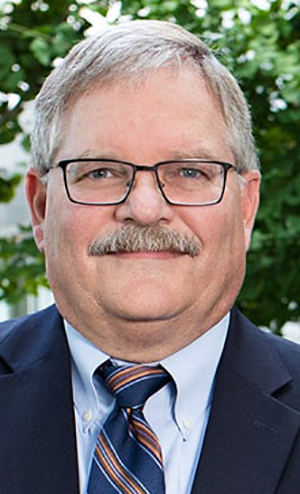Clinical laboratory leaders will want to pay close attention to a significant development in Maryland. The state’s All-Payer Medicare program—the nation’s only all-payer hospital rate regulation system—is broadening in scope to include outpatient services starting Jan. 1. The expanded program could impact independent medical laboratories, according to the Maryland Hospital Association (MHA), which told Dark Daily that those labs may see hospitals reaching out to them.
The Centers for Medicare and Medicaid Services (CMS) and the state of Maryland expect to save $1 billion by 2023 in expanding Maryland’s existing All-Payer Model—which focused only on inpatient services since 2014—to also include primary care physicians, skilled nursing facilities, independent clinical laboratories, and more non-hospital settings, according to a CMS statement.
Healthcare Finance notes that it represents “the first time, CMS is holding a state fully at risk for the total cost of care for Medicare beneficiaries.”
Value of Precision Medicine and Coordination of Care to Clinical Labs
“If a patient receives care at a [medical] laboratory outside of a hospital, Maryland hospitals would be looking at ways to coordinate the sharing of that freestanding laboratory information, so that the hospital can coordinate the care of that patient both within and outside the hospital setting,” Erin Cunningham, Communications Manager at MHA, told Dark Daily. Such a coordinating of efforts and sharing of clinical laboratory patient data should help promote precision medicine goals for patients engaged with physicians throughout Maryland’s healthcare networks.
The test of the new program—called the Total Cost of Care (TCOC) Model—also could be an indication that Medicare officials are intent on moving both inpatient and outpatient healthcare providers away from reimbursements based on fees-for-services.
CMS and the state of Maryland said TCOC gives diverse providers incentives to coordinate, center on patients, and save Medicare per capita costs of care each year.

“What they are really doing is tracking how effective we are at managing the quality and the costs of those particular patients that are managed by the physicians and the hospitals together,” Kevin Kelbly, VP and Chief Financial Officer at Carroll Hospital in Westminster, told the Carroll County Times. “They will have set up certain parameters. If we hit those parameters, there could be a shared savings opportunity between the hospitals and the providers,” he added. (Photo copyright: LifeBridge Health.)
The TCOC runs from 2019 through 2023, when it may be extended by officials for an additional five years.
How Does it Work?
The TCOC Model, like the earlier All-Payer Model, will limit Medicare’s costs in Maryland through a per capita, population-based payment, Healthcare Finance explained.
It includes three programs, including the:
- Maryland Primary Care Program (MDPCP), designed to incentivize physician practices by giving additional per beneficiary, per month CMS payments, and incentives for physicians to reduce the number of patients hospitalize;
- Care Redesign Program (CRP), which is a way for hospitals to make incentive payments to their partners in care. In essence, rewards may be given to providers that work efficiently with the hospital to improve quality of services; and,
- Hospital Payment Program, a population-based payment model that reimburses Maryland hospitals annually for hospital services. CMS provides financial incentives to hospitals that succeed in value-based care and reducing unnecessary hospitalizations and readmissions.
CMS and Maryland officials also identified these six high-priority areas for population health improvement:
- Substance-use disorder;
- Diabetes;
- Hypertension;
- Obesity;
- Smoking; and
- Asthma.
“We are going to save about a billion dollars over the next five years, but we are also providing better quality healthcare. So it’s going to affect real people in Maryland, and it helps us keep the whole healthcare system from collapsing, quite frankly,” Maryland Gov. Larry Hogan, told the Carroll County Times.
OneCare in Vermont, Different Approach to One Payer
Maryland is not the only state to try an all-payer model. Vermont’s OneCare is a statewide accountable care organization (ACO) model involving the state’s largest payers: Medicare, Medicaid, and Blue Cross and Blue Shield of Vermont, Healthcare Dive pointed out. The program aims to increase the number of patients under risk-based contracting and, simultaneously, encourage providers to meet population health goals, a Commonwealth Fund report noted.
Both Maryland’s and Vermont’s efforts indicate that payment plans which include value-based incentives are no longer just theory. In some markets, fees-for-service payment models may be gone for good.
Clinical laboratory leaders may want to touch base with their colleagues in Maryland and Vermont to learn how labs in those states are engaging providers and performing under payment programs that, if successful, could replace existing Medicare payment models in other states.
—Donna Marie Pocius
Related Information:
Maryland’s Total Cost of Care Model
Maryland All-Payer Model Expands to Include Outpatient Services
Gov. Hogan Sees Maryland Model as Example for U.S. Healthcare
Gov. Larry Hogan, Federal Government Sign Maryland Model All-Payer Contract
CMS Expands Maryland’s All-Payer Program to Outpatient Services
Vermont’s Bold Experiment in Community Driven Healthcare Reform



